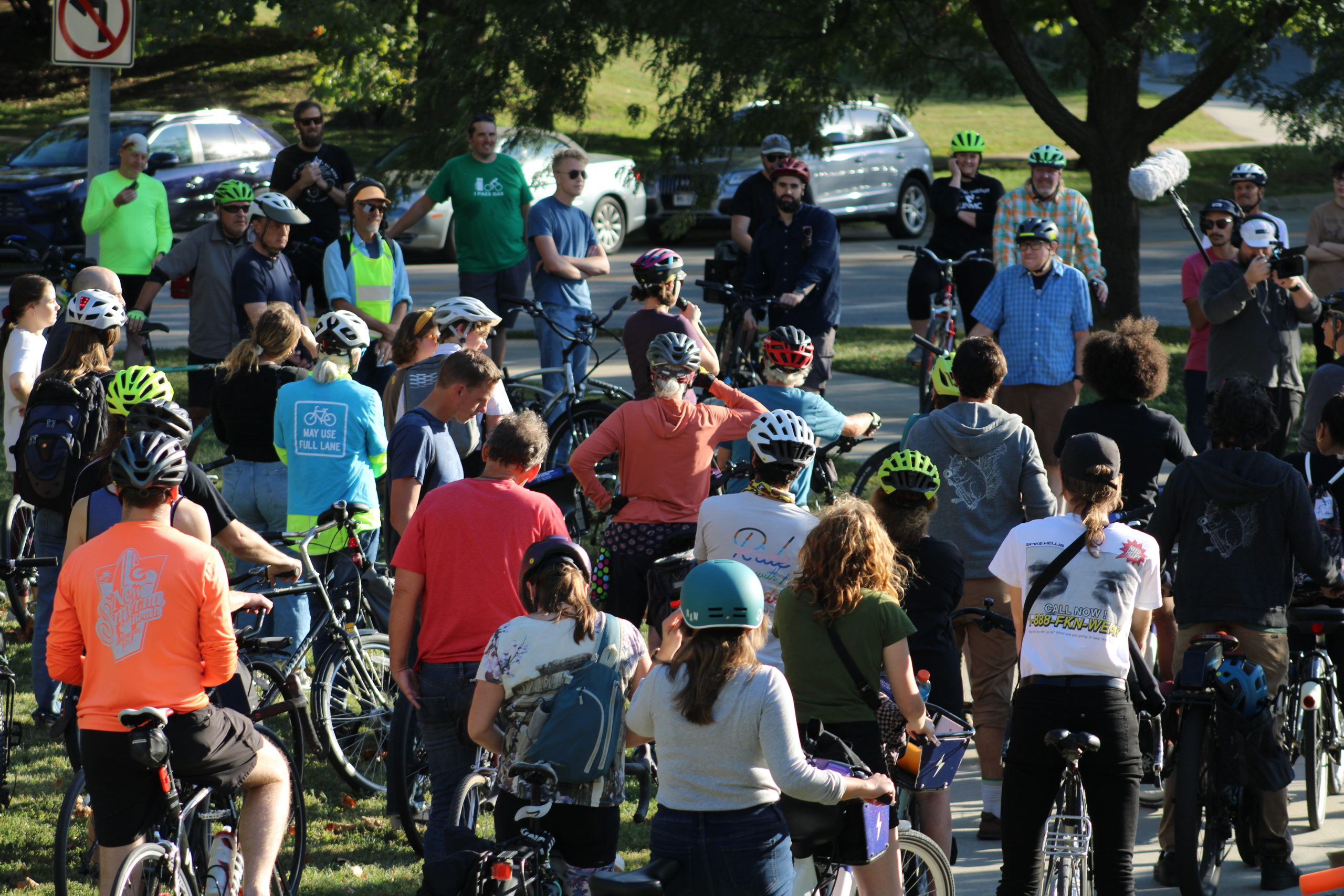In Sunday’s edition of the Omaha World Herald, a story ran summarizing current and projected commute times in Omaha. In short, Omaha’s standing as a 20-minute city (for automobile commutes, that is) appears to be in jeopardy.
The article rightly points out that Omaha is beginning to better understand its transportation needs, but we took issue with a few things in the article. The most important of which is the assertion that the central goal for transportation engineers and roadway designers should be to move cars as quickly as possible in all cases.
Automobile level of service (LOS) should not be the ultimate determinant in street design. The similarity of the A – F ratings to grades in school is unfortunate. When it comes to street design, sometimes a C is actually better than an A. In many cases, you want a lower vehicle speed; so a little congestion can be a good thing. Maple Street through Benson is a perfect example. LOS A would be horrendous (even though the street serves as a state highway). The slower stop-and-go traffic fosters an environment friendlier to and safer for people walking between the various shops, restaurants, and bars. It has allowed the place to come alive.
In addition, commute time projections are based on models that aren’t perfect. The MAPA model referenced in the article does a less than average job of incorporating transit and non-motorized transportation (or so we hear). Many models fail to adequately account for the shift between transportation modes that comes with changes in congestion or increased availability of higher quality transit or bicycle facilities. They also often fail to consider people who walk or bike for trips other than their work commutes and assume a never-ending growth in driving. Because of this, there is a national movement afoot to challenge traffic projections.
The article also points to mixed support for transit funding, but survey data obtained through the Heartland 2050 Vision show that there is slightly greater local support for investment in public transportation than the national AP poll cited. Transit is an important investment we’ve been skimping on for years. Metro is grossly underfunded. It receives just $36 per capita compared with a median of $56 per capita for similar sized cities across the country. Increased funding will improve service. Better service grows ridership, which means folks leave their cars at home; thus resulting in less congestion. Better transit also changes the character of our commutes. Twenty minutes reading a book on transit sure beats twenty minutes of driving in heavy traffic.
Still, as our city gets to a more sustainable shape with denser urban development and walkable/bikeable/transit-friendly neighborhoods, the automobile travel times for getting all the way across town will likely increase a bit. But here’s the thing: that’s actually OK. It’s that sort of discomfort that motivates us to actually live in areas that are closer to where we work, where we shop, and where we hang out. It’s also that pressure that inspires businesses to open up closer to where we already live. Ultimately, it’s a quality of life issue, and as our windshield time increases, we begin looking for ways to improve our lives by decreasing or eliminating that typically undesirable part of our lives.
Omaha is indeed seeing its transportation needs in a new light. The vision set out through the Heartland 2050 process could help us create a better community for all of us, if cities take the report’s recommendations to heart. And improvements in transit service and a forthcoming Complete Streets policy mean that getting around without a car will be easier and safer.
However, the article’s central premise that a small increase in the average commute time for drivers is a major cause of concern is misguided. There are more important functions for a city than moving cars quickly. Mainly, we need to create places that are worthwhile to be, not just places to drive through. We need to stop assuming that the amount each of us drives will always increase when we try to envision the future, and we need to understand that there is a limit to what we can do to support automobile travel. It’s time to shift our transportation funding priorities to other modes to provide us with transportation options that are personally and environmentally healthier, and it’s time to shift our mindset away from prioritizing driving speed over all else.



Excellent rebuttal! I hope you’ve sent this to the Omaha World Herald. Not to mention MAPA.
Thinking of ‘first’ and ‘last’ mile multi-modal transit: here’s one option for BRT stations: https://www.linkedin.com/pulse/great-minds-our-last-mile-solution-j-william-moore
Thanks for sharing, Bill. Interesting idea. Those first/last miles can be a game changer!